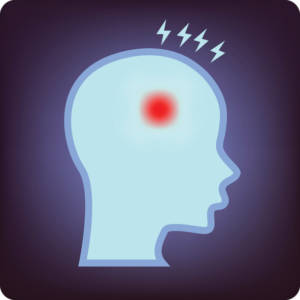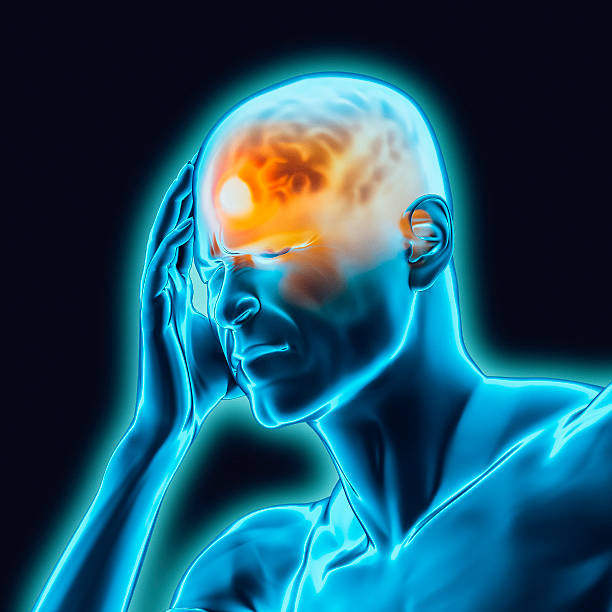
What does the location of your headache mean? A headache in the front of your head may be caused by something different than a pain in your temples, in the back of your head, or right in the middle of your head. This article will explain headache locations and areas and what they tell you.
According to the National Headache Foundation, over 45 million Americans suffer from headaches and of these, 28 million suffer from migraines.
What Do Your Headache Locations Mean?
There are several types of headaches; in fact, according to the National Headache Foundation, there are 150 different types of headaches. Looking at this headache chart and the content below, you can generally determine what type of headache you have depending on where exactly the pain is:
The most common headaches are migraines, tension headaches, and cluster headaches. They can be the result of illness, injury, or a problem elsewhere in the body. They can also occur from stress and emotional tension, overexertion, or even dietary issues.
Headaches can be anything from harmless to dangerous. Here's how to tell:
READ: Tension Headache 101
Headache Locations Meaning
Headache in the Front of your Head
- Tension headache
- Migraine
- Eye strain
- COVID headache
- Sinus headache
- Dehydration headache

Temples (side of your head)
- Tension headaches
- Ice-pick headache
- Cervicogenic headache
Back of your Head
- Cervicogenic headache
- Tension headache
- Dehydration headache
Middle/Top
- Tension-type headache
- Ice pick headache
- Cough headache
- Exertion headache
- Coital (intercourse) headache
One Side
- Migraines
- Cluster headaches
RELATED: Dangerous Headaches To Watch Out For

Types of Headaches and Locations
Cervicogenic headaches, one of the most common headache causes in the back of head. These headaches stem from the joints at the top of the neck.
Cluster headaches, which affect more men than women, are recurring headaches that occur in groups or cycles. They appear suddenly and are characterized by severe, debilitating pain on one side of the head, and are often accompanied by a watery eye and nasal congestion or a runny nose on the same side of the face.
COVID headache locations are something everyone is paying attention to nowadays due to the coronavirus. In some patients, the severe headache of COVID-19 only lasts a few days, while in others, it can last up to months. It is mostly felt around your whole head, with a severe-pressure type of pain. It's different than migraine, which by definition is unilateral throbbing with sensitivity to light, sound, or nausea. This is more of a whole-head pressure presentation.
Coital headaches, also known as "sexual headaches," occur at the base of the skull before orgasm during sexual activity. These headaches usually have an immediate onset, with some gradually worsening during sexual intercourse. They typically last for a few minutes to a few hours.
Dehydration headaches may occur at the front or back or just on one side of the head, or they may be felt throughout the entire head. Bending the head down or moving it from side to side often worsens the headache. Simply walking can cause more head pain.
Exertion headaches occur during or after sustained, strenuous exercise. Activities associated with exercise headaches include running, rowing, tennis, swimming and weightlifting.
Ice-pick headaches will often cause repeated sharp pains in the temples.
Migraines tend to cause one-sided pain, throbbing pain, moderate-to-severe pain, and pain that interferes with, is worsened by, or prohibits routine activity. Additionally, nausea and/or vomiting, and sensitivity to light and sound can accompany pain.
Sinus headaches are associated with a deep and constant pain in the cheekbones, forehead, or bridge of the nose. The pain usually intensifies with sudden head movement or straining. The pain is usually accompanied by other sinus symptoms, such as nasal discharge, the feeling of fullness in the ears, fever, and facial swelling.
Tension headaches, the most common type of headache, feels like a constant ache or pressure around the head, generally on both sides of the head.
In addition to the headache locations above, here's what other headache locations mean:
Caffeine-Withdrawal Headaches
- Symptoms: Throbbing headache caused by rebound dilation of the blood vessels, occurring multiple days after consumption of large quantities of caffeine.
- Precipitating Factors: Caffeine
- Treatment: Treat by terminating caffeine consumption in extreme cases.
- Prevention: Avoiding excess use of caffeine.
And what about those everyday headaches that seem to come back? No matter what headache locations are, here's what it means:
Chronic Daily Headaches
- Symptoms: Refers to a broad range of headache disorders occurring more than 15 days a month; two categories are determined by the duration of the headache (less than four hours and more than four hours).
- Precipitating Factors: Typically evolve from transformed migraine. Although not related to chronic tension-type headaches, they can evolve from episodic tension-type headaches. Can be associated with medication overuse.
- Treatment: Depending on the type of CDH, different treatment options exist. It is important to limit analgesic use.
- Prevention: Based on the diagnosis of headaches, how long they last, and the number experienced per month.








